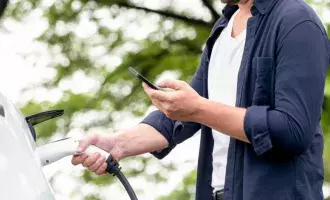As we’ve mentioned in a previous article, 2021 saw smaller UK energy suppliers cease trading and exit the market at an unprecedented rate. As these companies go into administration, the regulator Ofgem must ensure that their customers aren’t left without continuity of supply.
This past year, Ofgem has been forced to trigger its supplier of last resort (SoLR) strategy more and more frequently to keep the lights on.
Taking on new customers via the SoLR process
Like its fellow Big Six energy companies, EDF has taken on thousands of customers as the supplier of last resort. When it took over Utility Point after the latter ceased trading on 14 September 2021, EDF added another 220,000 accounts to their roster at an estimated onboarding cost of up to £600 per customer account. Some of these new customers may ultimately choose to leave their new supplier as appointed under SoLR and switch to an alternative, but in the meantime they must be onboarded.
Increasingly, suppliers of last resort are finding themselves reaching capacity and unable to take on any more customers, at least until accounts they have inherited via the SoLR process have been successfully migrated to their systems. Some of these suppliers have expressed concern over their capacity to maintain the quality of the services they provide with resources being stretched so thin.
Causes of the energy crisis
As the Covid-19 pandemic spread rapidly across the world, the UK’s gas and electricity use experienced a sharp downturn. While this drove fuel prices down (winning small energy firms new customers – larger firms mostly kept their tariffs at pre-pandemic prices), temporary government bans on disconnecting customers unable to pay also meant that these customers had to be supplied free of charge.
When demand for gas started to recover in 2021, so did wholesale prices – but rather than simply recovering, the latter reached record-breaking highs. The main cause was that the pandemic had slowed production, so supply was now unusually scarce. As energy caps rose, Ofgem warned of consequent increases in consumer energy bills, and one by one the smaller brands that had taken advantage of the reduced costs earlier in the pandemic to lower their tariffs began to flounder.
A double whammy for a legacy industry
Even before the current crisis, the energy industry was already going through a massive transition. The UK’s energy system, fuelled originally by coal (then partly by nuclear in the 1950s and North Sea oil and gas from the 60s), was designed and built in a time when supply and demand were very easy to predict. Households’ energy needs were relatively uniform, with very little variation. Providers generated power at one end, which they then distributed to consumers with a certain reliable consistency.
With the advent of innovations such as renewable energies and electric vehicles, however, the balance of supply and demand is far more volatile. On the one hand, many people are micro-generating their own power and then storing it or selling it back to the grid; on the other, customers are using greater quantities of power on a less reliable timetable – for example, to charge electric vehicles. All this variation makes it much harder to predict and match supply and demand.
The digitisation of our everyday lives has also resulted in vast quantities of data that can be very useful if used effectively. Harnessing that data, the challenger brands that emerged during the 2010s were able to provide customers with very specific services that tapped into the demands of a rapidly transforming market, disrupting the traditional utilities industry. Some challenger brands offered dynamic tariffing, providing custom-targeted tariffs for people who generated their own power. They provided additional solutions that enabled customers to sell energy back to the grid, or to buy it at unique points in the day.
These solutions filled a gap in the market created by a new generation of energy customers – those with domestic solar panels, a battery power wall for storing electricity, electric vehicles, etc. Data-driven apps alert these customers whenever there is excess power in the grid, enabling them to buy, consume and store energy at a lower price. Later, when the grid experiences higher demand, they may choose to sell power back to the grid at a profit.
With many of those challengers now going into liquidation, the industry is in danger of losing a great deal of the disruptive innovation that they brought to the market. The remaining traditional suppliers risk being unable to offer the same level of flexible, sophisticated products and services that made the challenger brands so attractive to next gen customers.
With the right technology, an agile start-up could afford to offer such a granular level of service to a relatively small number of customers, many of whom signed up on the basis of their agility, modern customer experience and ability (at least in the beginning) to offer greener tariffs. But as these challengers fail and are absorbed into larger organisations, each customer who had benefitted from the niche offerings of the smaller companies suddenly becomes one among a far vaster cohort. Offering such specialised services may not be in these fast-growing organisations’ interests: economies of scale make it commercially unviable to offer niche services just for those relatively few customers. They may simply have to accept the same tariffs and services as the rest, or switch to another niche provider with no guarantee that it won’t, like so many others, cease trading.
The journey to carbon zero needs those next gen customers – people generating their own power, storing it and reselling it. The current trend of failing smaller brands therefore presents a stumbling block to the net zero target.
The current rollout of smart meters is making available a great deal of granular customer data that's never before been available. The industry still needs innovators who can interpret the data and identify needs, then create new products and solutions to accelerate social goods such as reducing environmental damage, reducing carbon emissions and enhancing energy security. Such innovation is to be found among the entrepreneurial community – but if, through SoLR, everyone winds up working for a large corporate, we risk losing that innovation.
The traditional suppliers also face the challenges associated with operating legacy systems. Challenger brands are far more agile in their use of technology and hence their ability to serve the next generation of savvy consumers. The overall ecosystem needs the challengers and innovators to succeed, particularly in this new disruptive digital market.
How this relates to the broader SoLR context
Organisations bidding to be appointed the supplier of last resort encounter numerous issues. SoLRs face a considerable challenge when it comes to data migration for the onboarding new customers. Low quality data inefficiently migrated may lead to billing discrepancies, interrupted service and disgruntled customers who never signed up to be the SoLR’s customers in the first place.
Solutions for large, traditional organisations
No single provider can be expected to cater for everybody. A business managing 10 million customers will likely choose to focus on retaining them and reducing attrition rather than creating a super-solution that could net it an additional 10,000 customers. Organisations this size are more likely to invest in cost optimisation projects and retaining customers. By contrast, a smaller business with 50,000 customers has far lower overheads but faces greater risk of failure, yet it also has the freedom to be a lot more agile, to come up with innovative ideas, quickly test and implement them. Such a business might create a very specific service that nets it 10,000 new customers – which constitutes a big win for a smaller supplier.
There's no doubt that the industry has an urgent and immediate need for SoLR with so many challenger brands going into liquidation. But to retain customers newly acquired through SoLR, larger brands will have to become more flexible. This means providing a range of different types of customer service for different types of clients while ensuring data quality, a smooth migration and managing a large volume of data. Suppliers of last resort will need to adopt more varied kinds of customer service that provide next gen customers with the same – or similar – level of personalisation that they experienced before.
We’ve invested in innovative services to deal with the scale of customers we serve on a daily basis. We also have an ecosystem that includes the start-up community, so we can help to provide more innovative customer service. This enables larger companies to offer more bespoke packages to people used to the benefits of niche packages provided by the challenger brands.
Migrating large volumes of data successfully, while maintaining assured quality, can be very time-consuming without scaling up and expert help. Large numbers of new customers mean a higher demand for inbound call landlines, outbound call data transmission, complaint handling, collections, tariff adjustment, customer profiling and more. We can help SoLRs with the sudden influx of customers, including migrating new customers’ data, identifying their needs and providing specific customer service for those who need it. We can also ramp up rapidly to provide and train customer advisors.
Solutions for challenger brands that want to succeed
For challenger brands, we have experience in ramping up trained customer advisor teams rapidly during growth periods. Our data science capability uses machine learning algorithms to interpret industry trends and facilitate future scenario planning. By teaming up with us, smaller brands can scale up quite easily – our combination of people, digital and tech solutions enables us to provide customer service across the board.







